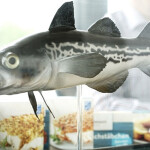After analyzing the size of over 800,000 individual fish around the world and realizing many have sustained stunted growth, researchers have recommended creating marine protected areas (MPAs) in patches of remote open ocean to ensure goals outlined by the “30x30” initiative come to fruition.
A study published in the journal Science in February, "Divergent responses of pelagic and benthic fish body-size structure to remoteness and protection from humans," compiled by researchers from the U.S., U.K., Australia, France, Norway, Ecuador, and Sudan, analyzed the abundance and size of sea creatures – from zooplankton to large predators – in the Atlantic, Pacific, and Indian oceans, and found that pelagic, or open ocean, species were profoundly smaller near human communities compared to benthic, seabed-dwelling fish. This highlights the heightened vulnerability of pelagic species to human impacts, according to the study.
“Many pelagic sharks and fish populations are at historically low levels. Our work shows that reversing this trend is possible but requires highly protected MPAs placed in remote locations, including on the high seas, where efforts are lacking,” ZSL Institute of Zoology Research Fellow and lead author of the study Tom Letessier said.
Conversely, the study’s findings indicated fish were larger in highly protected or remote locations, leading the its authors to recommend the prioritization of the creation of more MPAs as a means of preserving marine biodiversity. And for benthic fish, the study recommended more near-shore MPAs to properly facilitate their recovery.
“We found that fish size structure is more impacted by human pressure in the open ocean compared with benthic ecosystems. Whereas effective protection of benthic size structure can occur near markets, recovery of the world’s largest and most endangered fish requires highly protected MPAs in remote locations,” National Geographic Pristine Seas Scientist Alan Friedlander said.
The 30x30 plan seeks to conserve 30 percent of the world's lands and oceans by 2030. A bill introduced in the U.S. House of Representatives would create a complete ban on “commercial extractive use” in areas of designated conserved ocean areas.
Establishing MPAs in remote open ocean locations would create sanctuaries for pelagic fish recovery by facilitating growth of larger female fish and enabling them to produce larger numbers of offspring. This, in turn, would help fishermen, who would benefit from the spillover effect of healthy fish into areas outside the MPAs, ccording to the study.
The research employed baited cameras at 17,000 underwater stations that captured 1,460 species totaling a weight of 744 metric tons. Conducted over a 14-year period from January 2006 to May 2020, the study’s researchers reviewed over 20,000 hours of footage. The study's objective was to identify areas most conducive to successful implementation 30x30 goals for fishery and ocean recovery.








